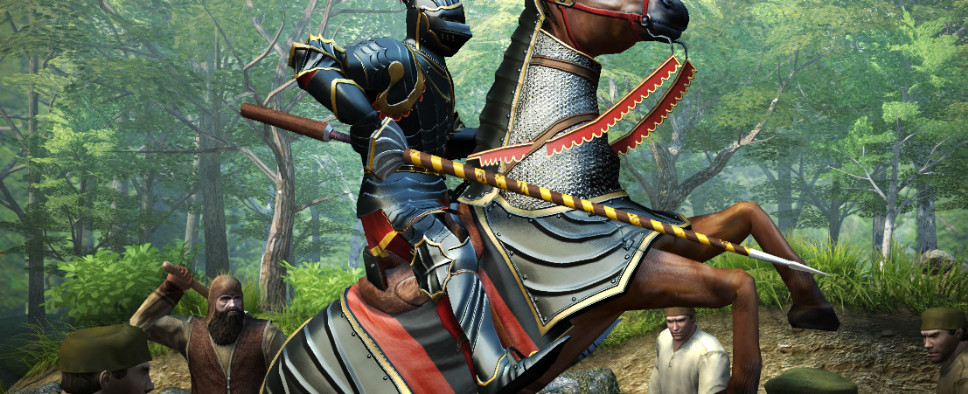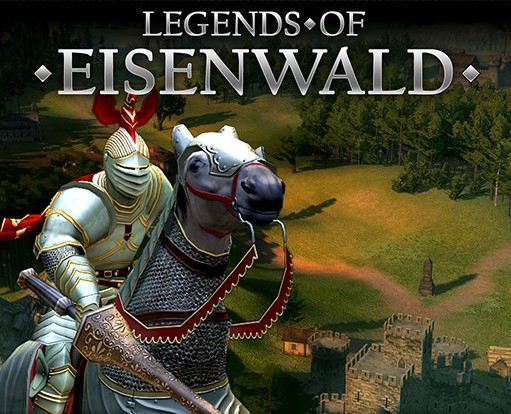Legends of Eisenwald Review
-
Category: ReviewsHits: 14123

Article Index
Introduction
Legends of Eisenwald is a new turn-based strategy game from Belarusian developer Aterdux Entertainment. It follows in the Heroes of Might & Magic mold where you build up your character and army, capture castles from your opponents, and manage your economy. Games in this genre traditionally have been pretty good, so can an indie title compete? Keep reading to find out.
Characters
When you begin a new game of Legends of Eisenwald, you have to create your hero character. You have three choices for this: a Knight (melee combat), a Baroness (ranged combat), or a Mystic (magic). Each hero gets three branches of skills, where two are the same for all classes, and one is unique. Melee characters do the most damage, especially if they're upgraded to ride horses, so the Knight class is the easiest to play. Mystics are for "advanced players."
Your hero also gets an army to help it out. Each character has 12 slots available in three rows. The front row (5 slots) is for melee characters, the middle row (4 slots) is for ranged characters, and the back row (3 slots) is for healers and utility characters. Your hero takes up one of the slots, and the rest can be filled in one of three ways: followers (who are assigned to you by the campaign), recruits (who are free after a one-time purchase cost, but who are limited by the number of castles you control), and mercenaries (who cost a certain amount of gold each day). You only get one hero with one army.
When your hero character gains a level, you get to pick out a new skill from one of the three skill branches. These skills can do useful things like give you an extra recruit, earn you more money from villages, or reduce the damage taken during castle sieges. Your army characters are different. When they gain a level, you choose an upgrade path for them. Sometimes these upgrades are linear, and sometimes they branch. So, for example, when you pick up a peasant woman, the first two times she gains a level, she just becomes more powerful, but after that her path branches, and she can either become a powerful healer or a witch. Meanwhile, young noblemen can eventually either become dual-wielding swordsmen or sword-and-board knights.
Combat
Combat starts up whenever two opposing armies run into each other on the game map. Battles are turn-based, where characters proceed in the order of their initiative attribute. Each character is limited in what it can do. Melee characters can move and attack during their turn, but they're only allowed to attack the nearest enemy, which means they can usually only pick between one or two targets. Ranged characters can pick any opponent, but their damage is reduced by distance, and enemies with shields can sometimes block their damage. Magic characters can target anybody, but their effectiveness is determined by how much spiritual power they have, and they lose some power each time they cast a spell.
As characters increase in level, they automatically gain access to new skills they can use on the battlefield, but these are pretty basic. For example, melee fighters don't start out with a defend skill. That's something they only gain as they advance. And no character gets a "skip turn" command, which is annoying. It means that sometimes you're forced to advance and / or attack with a character even when you don't want to (such as when a soldier is wounded and you don't want him charging into the fray).
At the end of a battle, you usually earn some xp and find some loot. All characters can use equipment, including weapons, armor, and jewelry. Nicely, characters start out with some basic equipment, which automatically improves as they gain levels. You can't remove this equipment from the character, but if you find something better, then you can have the character wear the improvement instead. Like a lot of RPGs, the equipment is rated from white (normal) to green (magical) to blue (more magical) to purple (uber magical). There isn't any set equipment.
Castle sieges are a special form of combat. Instead of having some sort of castle map for them, the game makes some simple "breach" calculations. The melee power of the attacking army determines how long the breach takes, and then during this time the ranged fighters from each side have at each other. Then when the breach is made, the calculated damage is deducted from each side, and the fighting proceeds normally from there. Wimpy armies get thrashed by castles, but powerful armies barely take any damage at all, so castles can be tough to defend. "Luckily," enemies rarely try to take them, even when they're left undefended.


